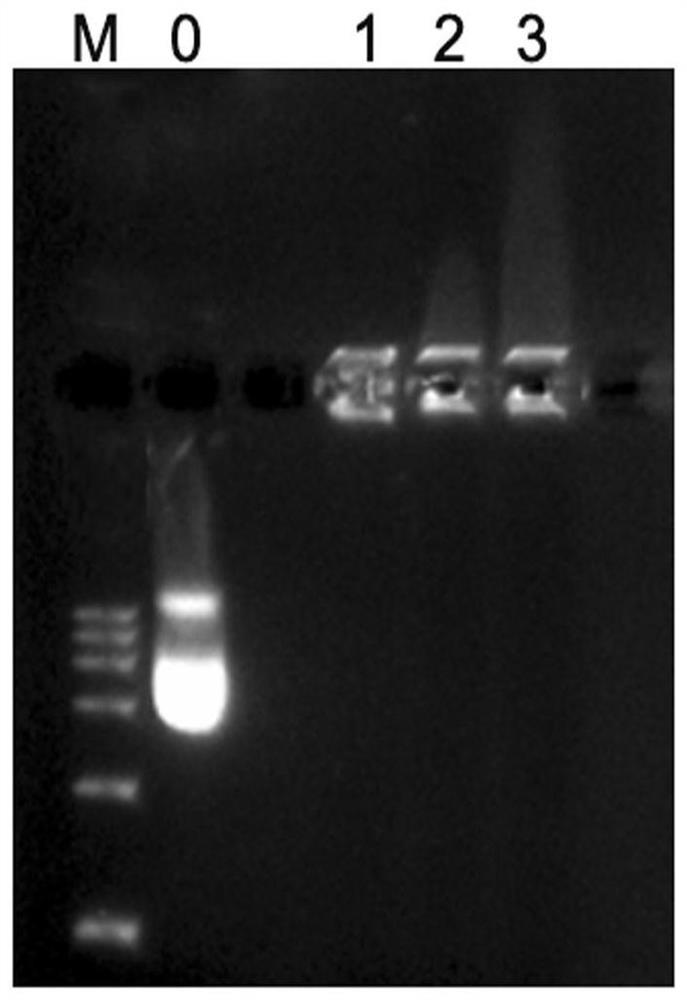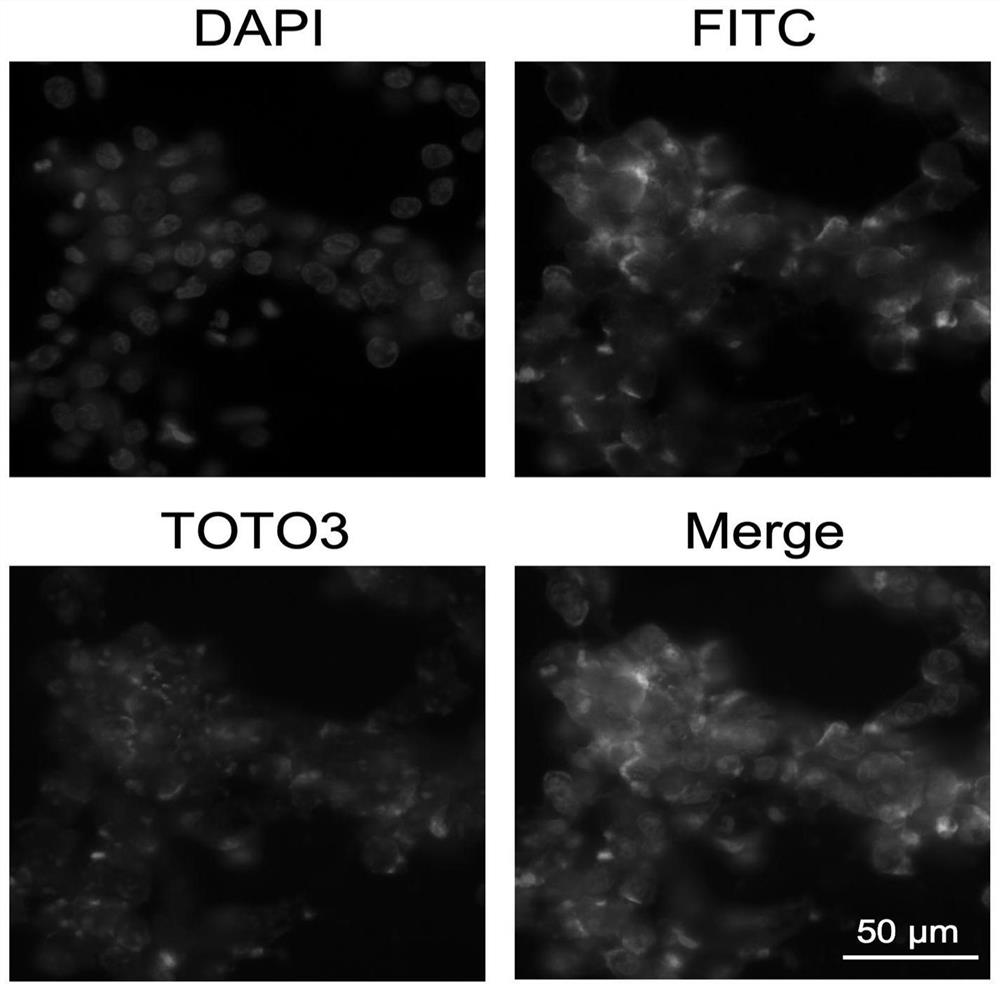Preparation method and application of protein-polymer composite nanomaterial gene vector
A technology of composite nanomaterials and polymers, applied in the construction and application of gene delivery carriers, can solve the problems of poor biocompatibility and biodegradability, complex synthesis process, and low transfection efficiency
- Summary
- Abstract
- Description
- Claims
- Application Information
AI Technical Summary
Problems solved by technology
Method used
Image
Examples
Embodiment 1
[0037] Example 1: Preparation and characterization of protein-polymer composite nanomaterials
[0038] 1. Preparation method
[0039] 1) Dissolve bovine serum albumin (Sigma-Aldrich#SRE0096) in pH 8.5, 100mM borate buffer, and pass through a 30kD ultrafiltration tube (Amicon#UFC5030BK) to change the solution by centrifugation four times in this buffer to Remove a small amount of NH4 that may exist in the protein + , Diquinoline formic acid (BCA) method to measure the concentration and use this buffer to dilute the protein to 10mg / ml.
[0040] 2) Dissolve N-hydroxysuccinimide acrylate (Sigma-Aldrich#A8060) in dimethyl sulfoxide (Sigma-Aldrich#276855) to make a 20mg / ml solution, take 5.1μl and 100μl of 10mg / ml bovine serum The albumin solution was mixed evenly (N-hydroxysuccinimide acrylate: bovine serum albumin = 40:1 molar ratio), and reacted at room temperature 25°C for 6 hours to obtain protein solution A with surface double bond modification.
[0041]3) Dissolve acrylami...
Embodiment 2
[0046] Example 2: Application of protein-polymer composite nanomaterials to present genes
[0047] The composite nanomaterial prepared in Example 1 can be applied to gene transfection. The process is as follows:
[0048] 1) Mix the above-mentioned composite nanomaterial with nucleic acid, and place it at room temperature for 20 minutes to obtain a carrier / nucleic acid complex.
[0049] 2) The vector / nucleic acid complex was added to the serum-free medium of HEK293T cells in the exponential growth phase, and after 4 hours of transfection, the medium was replaced with a complete medium, and the culture was continued for 4 days.
[0050] 3) Observe the gene transfection effect of the vector in the cells by means of flow cytometer and fluorescence microscope.
[0051] The following are the specific experimental steps:
[0052] 1. Cellular Internalization of Composite Nanomaterial Carriers / Nucleic Acids
[0053] Before the internalization experiments of the composite nanomateri...
Embodiment 3
[0056] Embodiment 3: the optimization of preparation material of protein-polymer composite nanomaterial
[0057] 1. Optimal selection of crosslinking agent
[0058] Only replace the cross-linking agent, adopt the same preparation method as in Example 1 (the cross-linking agent of B4 is N,N'-methylenebisacrylamide) to prepare several other material systems, where B5 is prepared without adding a cross-linking agent , the crosslinking agent of B6 is poly(DL-lactide)-b-poly(ethylene glycol)-b-poly(DL-lactide)-diacrylate triblock copolymer (PolySciTech#AI102), The crosslinker for B7 was glyceryl dimethacrylate (Sigma-Aldrich #436895). The molecular structure of each crosslinking agent is as follows Figure 6 as shown in a.
[0059] Figure 6 b is the water contact angle of each material system measured by a surface interfacial tensiometer (DCAT21, Dataphysics). The larger the contact angle, the higher the hydrophobicity of the material. The results showed that N,N'-methylenebi...
PUM
| Property | Measurement | Unit |
|---|---|---|
| particle size | aaaaa | aaaaa |
Abstract
Description
Claims
Application Information
 Login to View More
Login to View More - R&D
- Intellectual Property
- Life Sciences
- Materials
- Tech Scout
- Unparalleled Data Quality
- Higher Quality Content
- 60% Fewer Hallucinations
Browse by: Latest US Patents, China's latest patents, Technical Efficacy Thesaurus, Application Domain, Technology Topic, Popular Technical Reports.
© 2025 PatSnap. All rights reserved.Legal|Privacy policy|Modern Slavery Act Transparency Statement|Sitemap|About US| Contact US: help@patsnap.com



